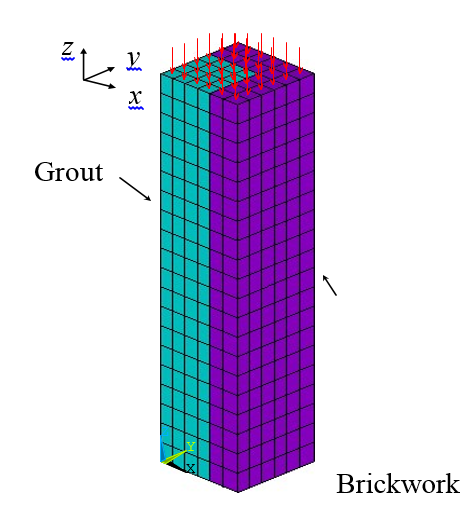T. Fan1, J.J. Kim2, M.M. Reda Taha3, and N.G. Shrive4
- PhD Student, Dept. of Civil Engineering, University of New Mexico, Albuquerque, NM, USA
- Post Doctoral Fellow, Dept. of Civil Engineering, University of New Mexico, Albuquerque, NM, USA
- Associate Professor and Regents’ Lecturer, Dept. Of Civil Engineering, University of New Mexico, Albuquerque, NM, USA, mrtaha@unm.edu
- Killam Memorial Professor, Dept. of Civil Engineering, University of Calgary, Calgary, Alberta, Canada, ngshrive@ucalgary.ca
ABSTRACT
It is well established that creep can produce significant effects on the structural behaviour of quasi-brittle materials such as masonry. In addition to increasing deformations, creep can alter the stress distribution within a masonry element significantly. Using simplified mechanical models with step-by-step in time analysis, we have previously concluded that the interaction of creep and damage in masonry can accelerate the failure of masonry elements. In this paper we use a three dimensional finite element model to demonstrate the significance of combining creep and damage on the behaviour of structural masonry. The three-dimensional finite element model enables us to simulate realistic boundary conditions and the effects of Poisson’s ratio on creating the out-of-plane constraint stresses which affect grout and brickwork. A cracking criterion is introduced to model crack occurrence. The model permits comparison of the numerous interactions between damage and creep in both grout and brickwork. We identify the significance of such interactions on the long-term behaviour of a masonry column subjected to axial load.
KEYWORDS: masonry, creep, damage, finite element modelling
B4-2



